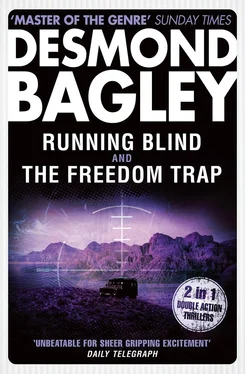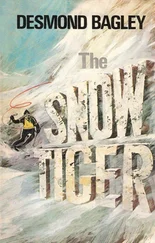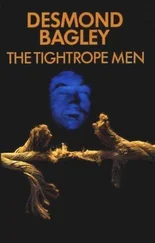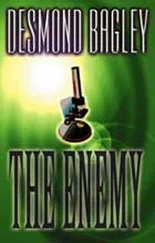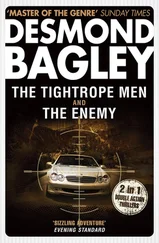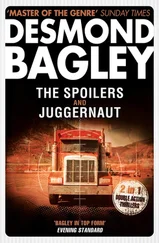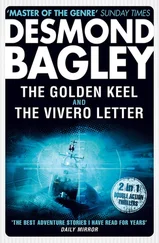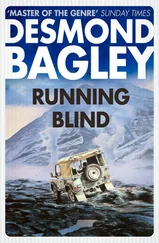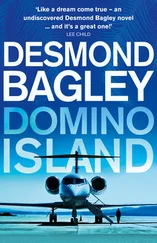‘And then?’
‘Then we head for Dettifoss – but not by the main road. We keep on the track to the west of the river.’
‘What are you going to do about Slade? You’re going to kill him, aren’t you?’
‘He might kill me first,’ I said. ‘Let’s have no illusions about Slade.’
‘No more killing, Alan,’ she said. ‘Please – no more killing.’
‘It might not be up to me. If he shoots at me then I’ll shoot back.’
‘All right,’ she said quietly.
So I left her and headed towards the entrance to Asbyrgi, padding softly along the track and hoping that Slade wouldn’t come looking for Graham. I didn’t think it likely. Although he must have heard the shot he would have been expecting it, and then it would have taken Graham a half-hour to return after searching for the package. My guess was that Slade wouldn’t be expecting Graham for another hour.
I made good time but slowed as I approached the entrance. Slade had not bothered to hide his car; it was parked in full sight and was clearly visible because the short northern night was nearly over and the sky was light. He knew what he was doing because it was impossible to get close to the car without being seen, so I settled behind a rock and waited for Elin. I had no relish for walking across that open ground only to stop a bullet.
Presently I heard her coming. The noise was quite loud as she changed gear and I saw a hint of movement from inside the parked car. I nestled my cheek against the stock of the carbine and aimed. Graham had been professional enough to put a spot of luminous paint on the foresight but it was not necessary in the pre-dawn light.
I settled the sight on the driving side and, as the noise behind me built up to a crescendo, I slapped three bullets in as many seconds through the windscreen which must have been made of laminated glass because it went totally opaque. Slade took off in a wide sweep and I saw that the only thing that had saved him was that the car had right-hand drive, English style, and I had shot holes in the wrong side of the windscreen.
But he wasn’t waiting for me to correct the error and bucked away down the track as fast as he could go. The Land-Rover came up behind me and I jumped for it. ‘Get going!’ I yelled. ‘Make it fast.’
Ahead, Slade’s car skidded around a corner in a four-wheel drift, kicking up a cloud of dust. He was heading for the main road, but when we arrived at the corner Elin turned the other way as I had instructed her. It would have been useless chasing Slade – a Land-Rover isn’t built for that and he had the advantage.
We turned south on to the track which parallels the Jökulsà à Fjöllum , the big river that takes the melt water north from Vatnajökull, and the roughness of the ground dictated a reduction in speed. Elin said, ‘Did you talk to Slade?’
‘I couldn’t get near him.’
‘I’m glad you didn’t kill him.’
‘It wasn’t for want of trying,’ I said. ‘If he had a left-hand drive car he’d be dead by now.’
‘And would that make you feel any better?’ she asked cuttingly.
I looked at her. ‘Elin,’ I said, ‘The man’s dangerous. Either he’s gone off his nut – which I think is unlikely – or …’
‘Or what?’
‘I don’t know,’ I said despondently. ‘It’s too damned complicated and I don’t know enough. But I do know that Slade wants me dead. There’s something I know – or something he thinks I know – that’s dangerous for him; dangerous enough for him to want to kill me. Under the circumstances I don’t want you around – you could get in the line of fire. You did get in the line of fire this morning.’
She slowed because of a deep rut. ‘You can’t survive alone,’ she said. ‘You need help.’
I needed more than help; I needed a new set of brains to work out this convoluted problem. But this wasn’t the time to do it because Elin’s shoulder was giving her hell. ‘Pull up,’ I said. ‘I’ll do the driving.’
We travelled south for an hour and a half and Elin said, ‘There’s Dettifoss.’
I looked out over the rocky landscape towards the cloud of spray in the distance which hung over the deep gorge which the Jökulsá á Fjöllum has cut deep into the rock. ‘We’ll carry on to Selfoss,’ I decided. ‘Two waterfalls are better than one. Besides, there are usually campers at Dettifoss.’
We went past Dettifoss and, three kilometres farther on, I pulled off the road. ‘This is as close to Selfoss as we can get.’
I got out. ‘I’ll go towards the river and see if anyone’s around,’ I said. ‘It’s bad form to be seen humping bodies about. Wait here and don’t talk to any strange men.’
I checked to see if the body was still decently shrouded by the blanket with which we had covered it, and then headed towards the river. It was still very early in the morning and there was no one about so I went back and opened the rear door of the vehicle and climbed inside.
I stripped the blanket away from Graham’s body and searched his clothing. His wallet contained some Icelandic currency and a sheaf of Deutschmarks, together with a German motoring club card identifying him as Dieter Buchner, as also did his German passport. There was a photograph of him with his arm around a pretty girl and a fascia board of a shop behind them was in German. The Department was always thorough about that kind of thing.
The only other item of interest was a packet of rifle ammunition which had been broken open. I put that on one side, pulled out the body and replaced the wallet in the pocket, and then carried him in a fireman’s lift towards the river with Elin close on my heels.
I got to the lip of the gorge and put down the body while I studied the situation. The gorge at this point was curved and the river had undercut the rock face so that it was a straight drop right into the water. I pushed the body over the edge and watched it fall in a tumble of arms and legs until it splashed into the grey, swirling water. Buoyed by air trapped in the jacket it floated out until it was caught in the quick midstream current. We watched it go downstream until it disappeared over the edge of Selfoss to drop into the roaring cauldron below.
Elin looked at me sadly. ‘And what now?’
‘Now I go south,’ I said, and walked away quickly towards the Land-Rover. When Elin caught up with me I was bashing hell out of the radio-bug with a big stone.
‘Why south?’ she asked breathlessly.
‘I want to get to Keflavik and back to London. There’s a man I want to talk to – Sir David Taggart.’
‘We go by way of Myvatn?’
I shook my head, and gave the radio-bug one last clout, sure now that it would tell no more tales. ‘I’m keeping off the main roads – they’re too dangerous. I go by way of the Odádahraun and by Askja – into the desert. But you’re not coming.’
‘We’ll see,’ she said, and tossed the car key in her hand.
God has not yet finished making Iceland.
In the last 500 years one-third of all the lava extruded from the guts of the earth to the face of the planet has surfaced in Iceland and, of 200 known volcanoes, thirty are still very much active. Iceland suffers from a bad case of geological acne.
For the last thousand years a major eruption has been recorded, on average, every five years. Askja – the ash volcano – last blew its top in 1961. Measurable quantities of volcanic ash settled on the roofs of Leningrad, 1,500 miles away. That didn’t trouble the Russians overmuch but the effect was more serious nearer home. The country to north and east of Askja was scorched and poisoned by deep deposits of ash and, nearer to Askja, the lava flows overran the land, overlaying desolation with desolation. Askja dominates north-east Iceland and has created the most awesome landscape in the world.
Читать дальше
